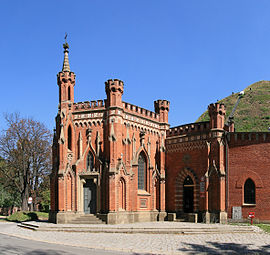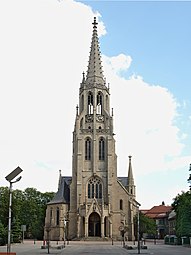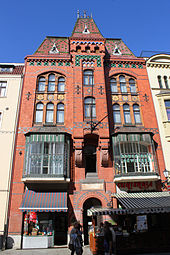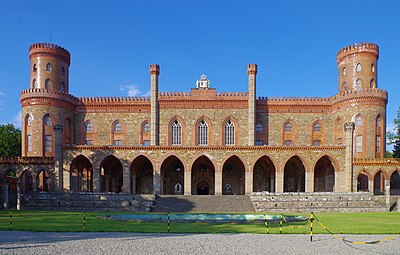
Toruń is a city on the Vistula River in north-central Poland and a UNESCO World Heritage Site. Its population was 196,935 as of December 2021. Previously, it was the capital of the Toruń Voivodeship (1975–1998) and the Pomeranian Voivodeship (1921–1945). Since 1999, Toruń has been a seat of the local government of the Kuyavian-Pomeranian Voivodeship and is one of its two capitals, together with Bydgoszcz. The cities and neighboring counties form the Bydgoszcz–Toruń twin city metropolitan area.
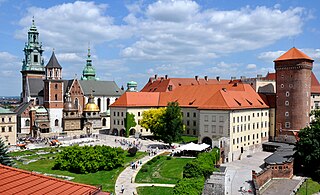
Poland is a part of the global tourism market with constantly increasing number of visitors. Tourism in Poland contributes to the country's overall economy. The most popular cities are Kraków, Warsaw, Wrocław, Gdańsk, Poznań, Szczecin, Lublin, Toruń, Zakopane, the Salt Mine in Wieliczka and the historic site of Auschwitz – a German Nazi concentration camp in Oświęcim. The best recreational destinations include Poland's Masurian Lake District, Baltic Sea coast, Tatra Mountains, Sudetes and Białowieża Forest. Poland's main tourist offers consist of sightseeing within cities, historical monuments, natural monuments, business trips, agrotourism, bicycle touring, qualified tourism, mountain hiking (trekking) and climbing among others.
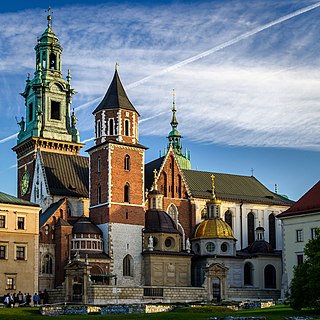
The Wawel Cathedral, formally titled the Archcathedral Basilica of Saint Stanislaus and Saint Wenceslaus, is a Catholic cathedral situated on Wawel Hill in Kraków, Poland. Nearly 1000 years old, it is part of the Wawel Castle Complex and is a national sanctuary which served as the coronation site of Polish monarchs.

The Wawel Royal Castle and the Wawel Hill on which it sits constitute the most historically and culturally significant site in Poland. A fortified residency on the Vistula River in Kraków, it was established on the orders of King Casimir III the Great and enlarged over the centuries into a number of structures around an Italian-styled courtyard. It represents nearly all European architectural styles of the Medieval, Renaissance and Baroque periods.

Brick Gothic is a specific style of Gothic architecture common in Northeast and Central Europe especially in the regions in and around the Baltic Sea, which do not have resources of standing rock. The buildings are essentially built using bricks. Buildings classified as Brick Gothic are found in Belgium, Netherlands, Germany, Poland, Lithuania, Latvia, Estonia, Kaliningrad, Denmark, Sweden and Finland.

The Gothic architecture arrived in Poland in the first half of the 13th century with the arrival of the Dominican and Franciscan orders. The first elements of the new style are evident in the foundation of the Dominican Trinity church in Kraków (1226–1250), built by Bishop Iwo Odrowąż. Rebuilding of the Wrocław Cathedral, started in 1244, was another early manifestation of the Gothic style. The earliest building in Poland built entirely in the Gothic style is the chapel of St. Hedwig in Trzebnica (1268–1269), on the grounds of a Cistercian monastery.
The Polish Baroque lasted from the early 17th to the mid-18th century. As with Baroque style elsewhere in Europe, Poland's Baroque emphasized the richness and triumphant power of contemporary art forms. In contrast to the previous, Renaissance style which sought to depict the beauty and harmony of nature, Baroque artists strove to create their own vision of the world. The result was manifold, regarded by some critics as grand and dramatic, but sometimes also chaotic and disharmonious and tinged with affectation and religious exaltation, thus reflecting the turbulent times of the 17th-century Europe.

Neoclassical architecture in Poland was centered on Warsaw under the reign of Stanisław August Poniatowski, while the modern concept of a single capital city was to some extent inapplicable in the decentralized Polish–Lithuanian Commonwealth. Classicism came to Poland in the 18th century as the result of French infiltrations into the Polish millieu. The best-known architects and artists who worked in Poland were Dominik Merlini, Jan Chrystian Kamsetzer, Szymon Bogumił Zug, Stanisław Zawadzki, Efraim Szreger, Antonio Corazzi, Jakub Kubicki, Hilary Szpilowski, Christian Piotr Aigner, Wawrzyniec Gucewicz, Bonifacy Witkowski and Danish Bertel Thorvaldsen.

Sopot railway station is the main railway station serving the city of Sopot, in the Pomeranian Voivodeship, Poland. The station opened in 1870 and is located on the Gdańsk–Stargard railway and the parallel Gdańsk Śródmieście–Rumia railway. The train services are operated by PKP, Polregio and SKM Tricity. Koleje Mazowieckie trains operate here during the summer.

In the summer of 1939, weeks ahead of the Nazi German and Soviet invasion of Poland the map of both Europe and Poland looked very different from today. The railway network of interwar Poland had little in common with the postwar reality of dramatically changing borders and political domination of the Soviet-style communism, as well as the pre-independence German, Austrian and Russian networks which the Second Polish Republic had partially inherited in 1918 after the end of World War I. The most important junctions in the Polish territory in summer of 1939 were:

The culture of medieval Poland was closely linked to the Catholic Church and its involvement in the country's affairs, especially during the first centuries of the Polish state's history. Many of the oldest Polish customs and artifacts date from the Middle Ages, which in Poland lasted from the late 10th to late 15th century, and were followed by the Polish Renaissance.

The architecture of Poland includes modern and historical monuments of architectural and historical importance.

Łowicz Główny is a railway station serving the town of Łowicz, in the Łódź Voivodeship, Poland. The station opened in 1861 and is located on the Warsaw–Kunowice railway, Skierniewice–Łowicz railway and Łowicz–Łódź railway. The train services are operated by PKP, Koleje Mazowieckie, Łódzka Kolej Aglomeracyjna and Przewozy Regionalne.
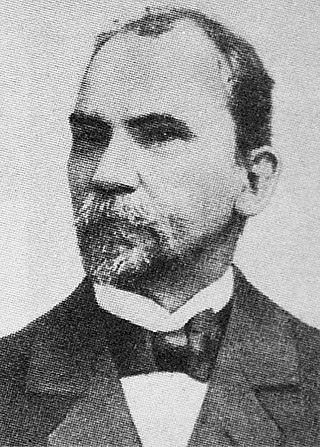
Józef Pius Dziekoński was a Polish architect and heritage conservator, a representative of the 19th-century historicism. He became the first dean at the Faculty of Architecture of the Warsaw University of Technology and co-founded the Society for the Protection of Historical Monuments (TOnZP).

The Orthodox Cathedral of St. Nicholas in Białystok is an historic Orthodox cathedral in Bialystok, Poland

Stanisław Horno-Popławski (1902-1997) was a Russian-Polish painter, sculptor and pedagogue.
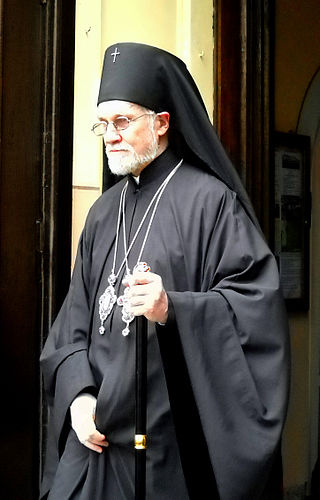
Archbishop Szymon,. was the Archbishop of Łódź and Poznań.

